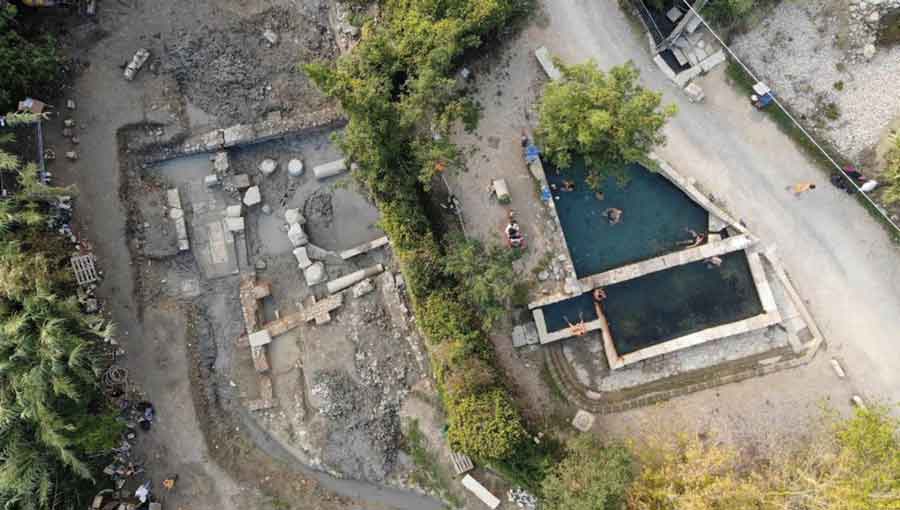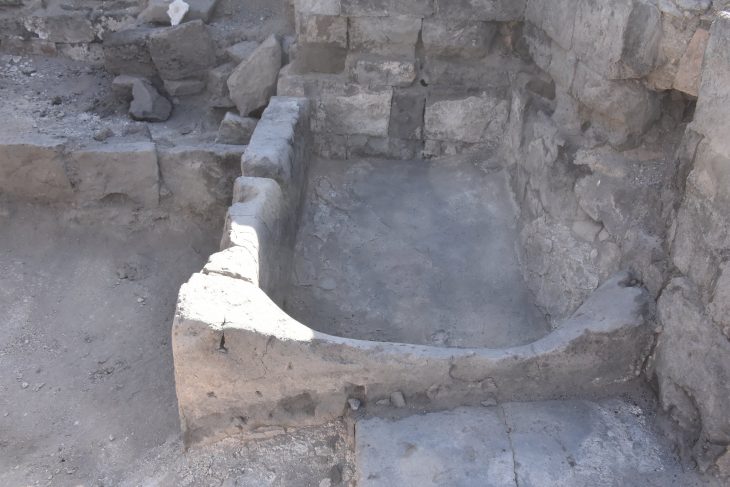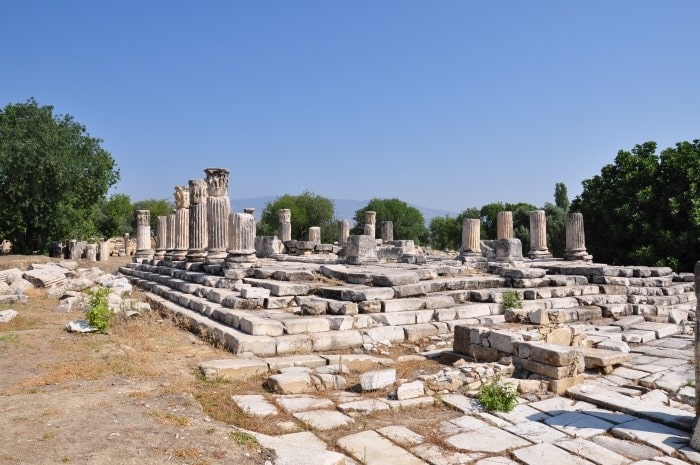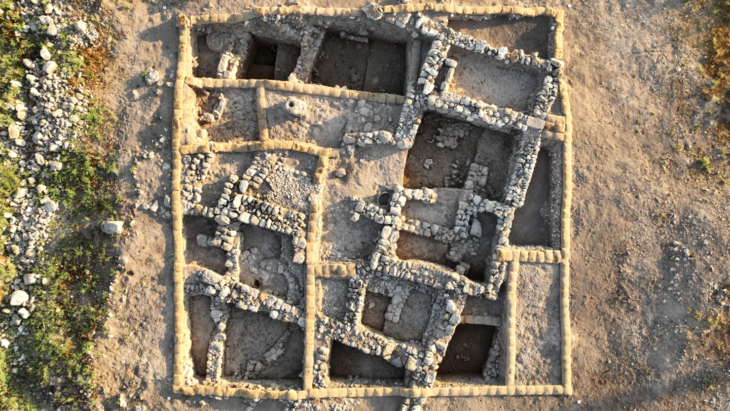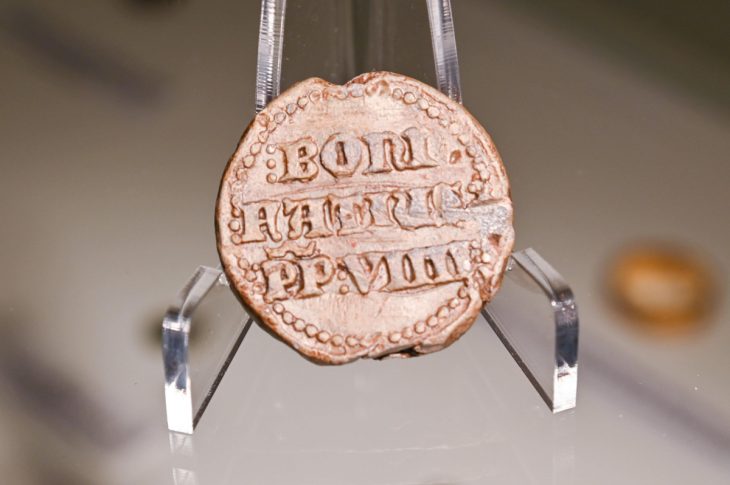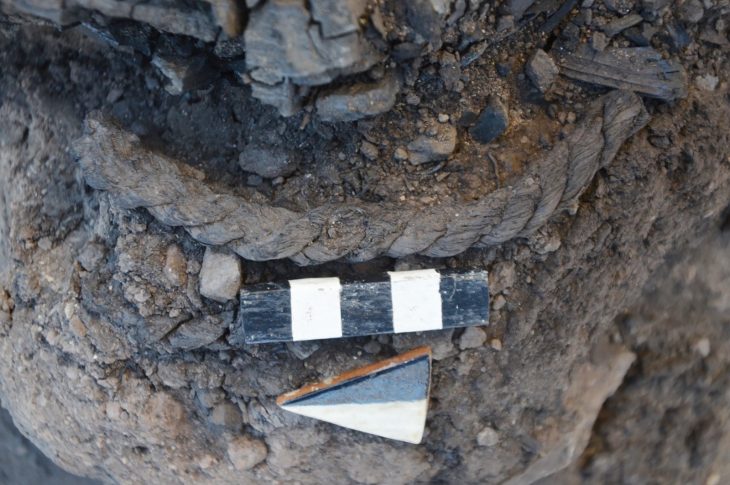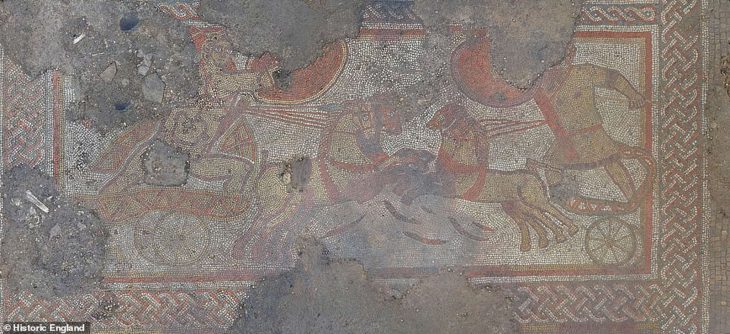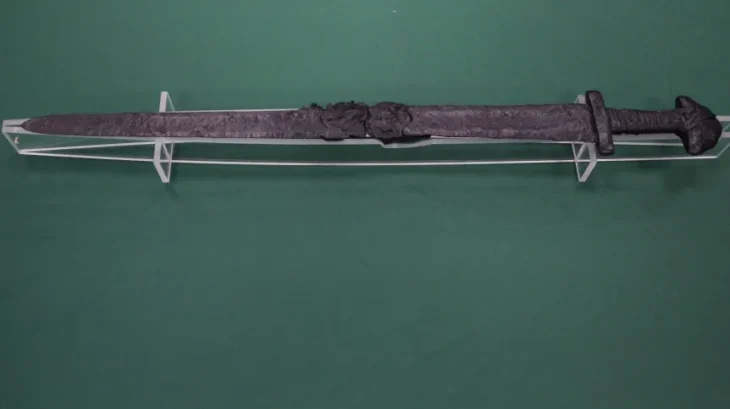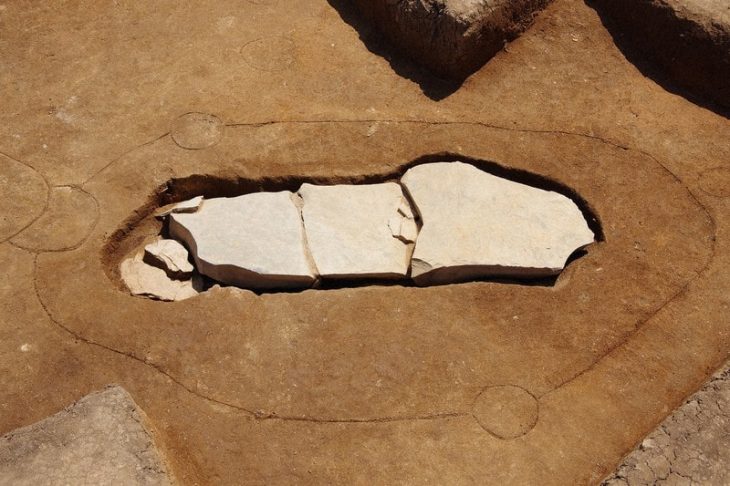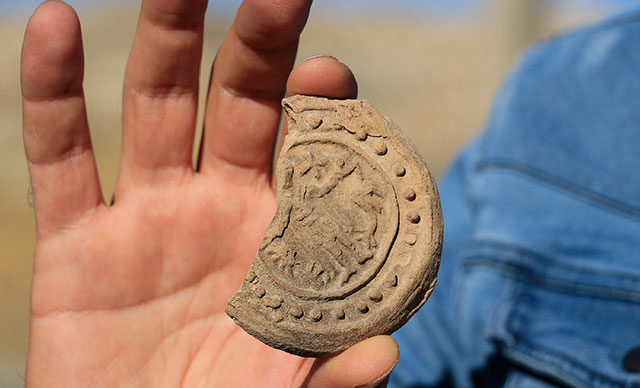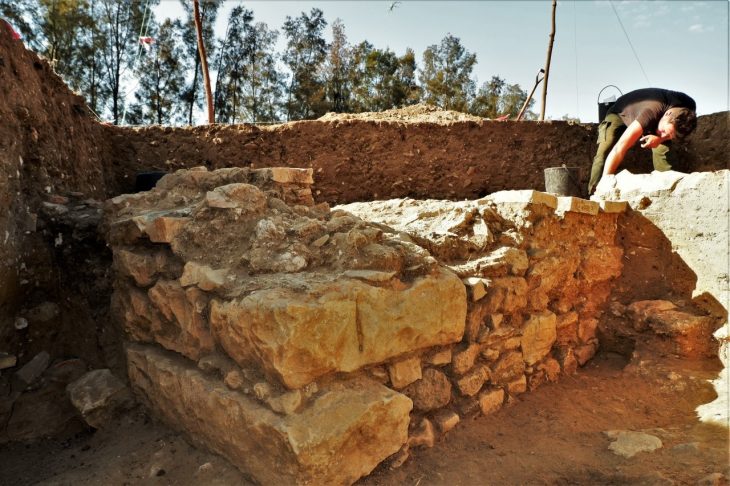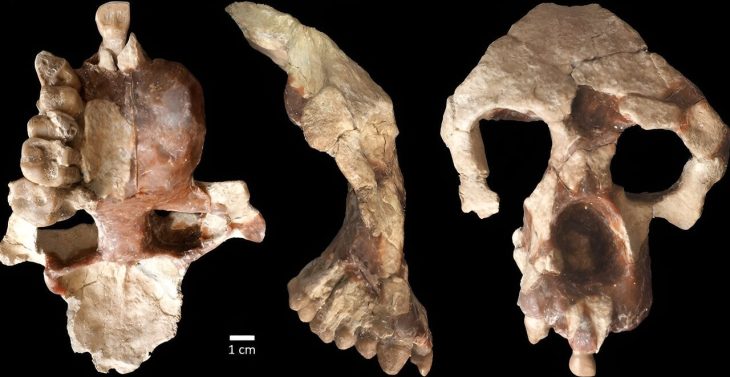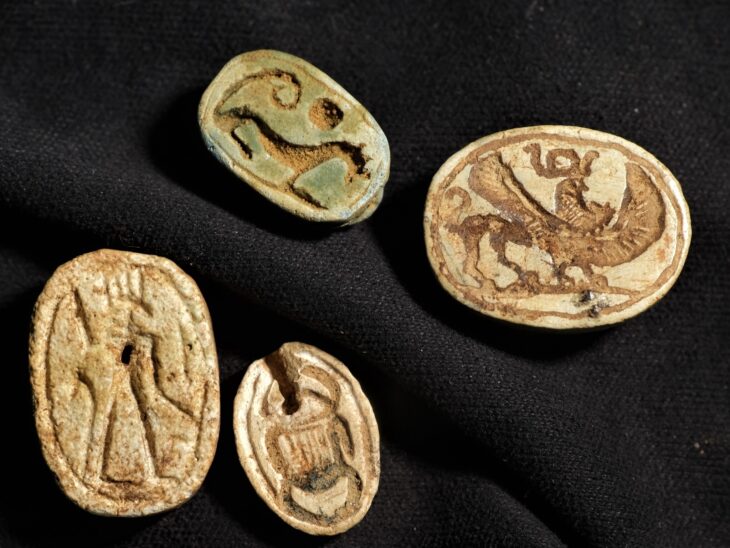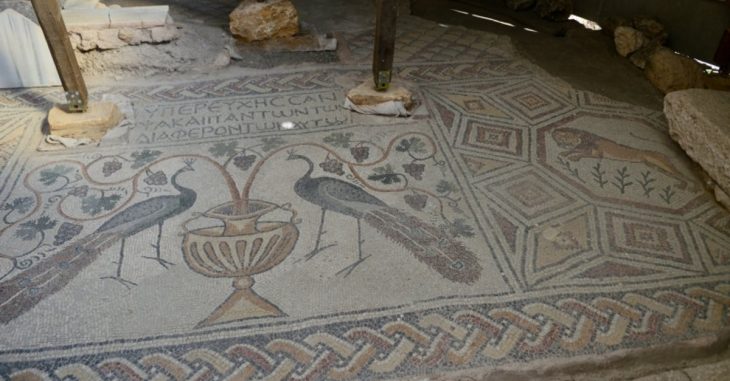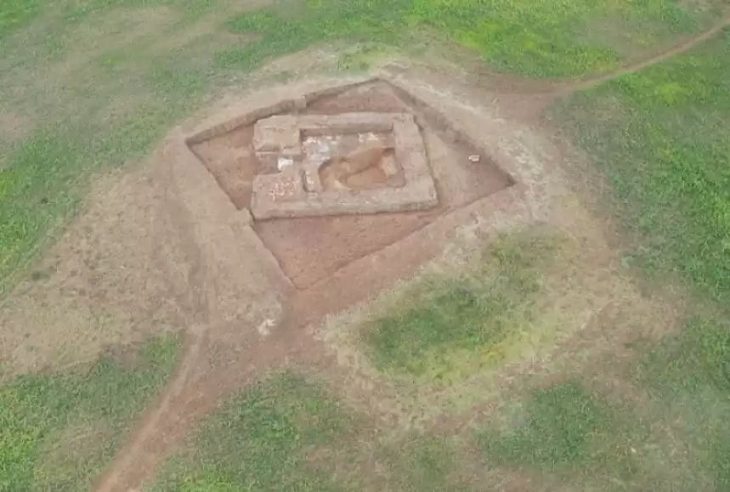In San Casciano Dei Bagni, a Tuscan hill town famous for its hot springs, 40 miles southeast of Siena, unique treasures were unearthed in the 6 excavation seasons of the Roman baths.
Hundreds of gold, silver, orichalcum, and bronze coins, a bronze putto, a marble relief of a bull’s head, five bronze votive figurines, miniature lamps, a bronze foil belt, and other religious offerings were found during excavations this summer in San Casciano Dei Bagni, establishing the baths as a particularly rich religious sanctuary beyond their significance as a thermal resort.
The first civilization to construct facilities for thermal waters was the Etruscans, but the Romans, who were real aficionados of thermal baths, were in charge when the curative powers of these waters first attracted widespread attention, as shown by the abundance of archaeological artifacts in the region.
The hot springs at San Casciano Dei Bagni have been in continuous use since the Etruscans invaded the area. The thermal pools were used as an open-air bath adjacent to the remains of the Roman spa built here during the Augustus period.
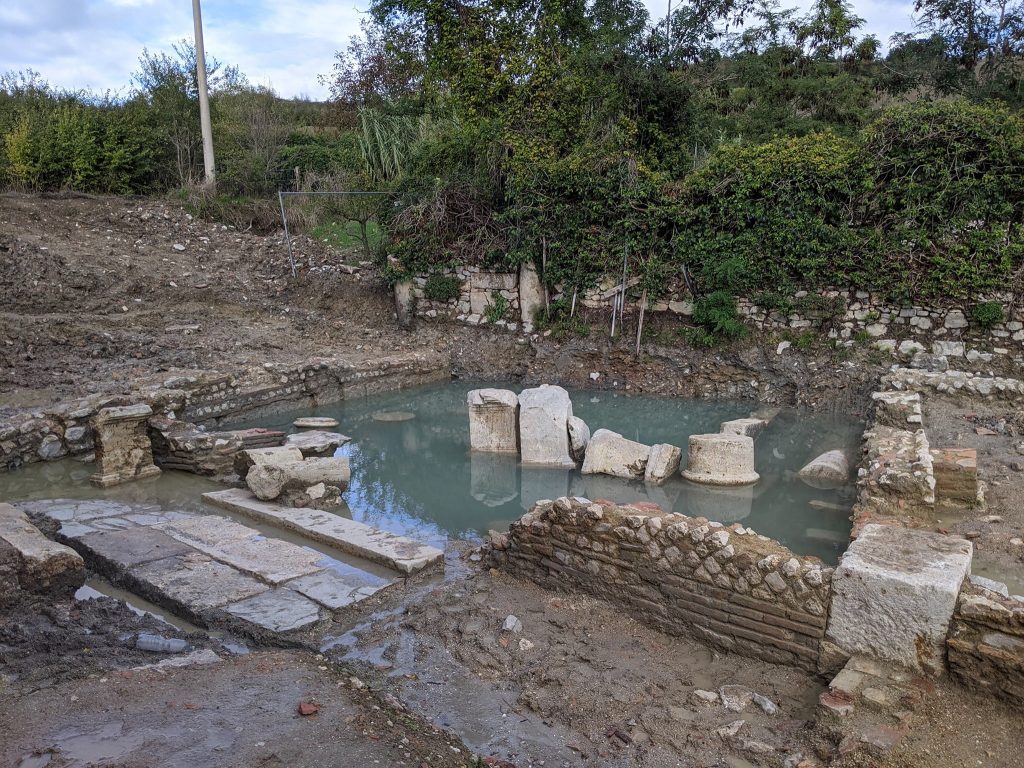
It was discovered during excavations carried out between July and October last year, in a muddy garden adjacent to the spring, 20 meters south of the pools. They unearthed a section of a multi-layer Roman sanctuary built in the Augustan era (between 27 BC and 14 AD) that contained three altars dedicated to Apollo, Isis, and Fortuna Primigenia respectively and a marble statue of Hygieia. Inscriptions honor Apollo as the god of healing. A wall of massive, well-cut blocks beneath the Augustan-period shrine shows that it was erected over a much older holy site, potentially going back to the Hellenistic era, and maybe even earlier Etruscan origin.
In the first century, a fire severely destroyed the sanctuary; it was afterward repaired and enlarged. Around the end of the second century, the altars were placed on the edge of the great bath. The sanctuary was rebuilt in the early fourth century, with a few tiny additions, but by the end of the century, the previous sanctuary had been destroyed. Votive gifts, including the figure of Hygieia, were placed on horizontal altars and columns. This was possibly connected to the area’s Christianization.
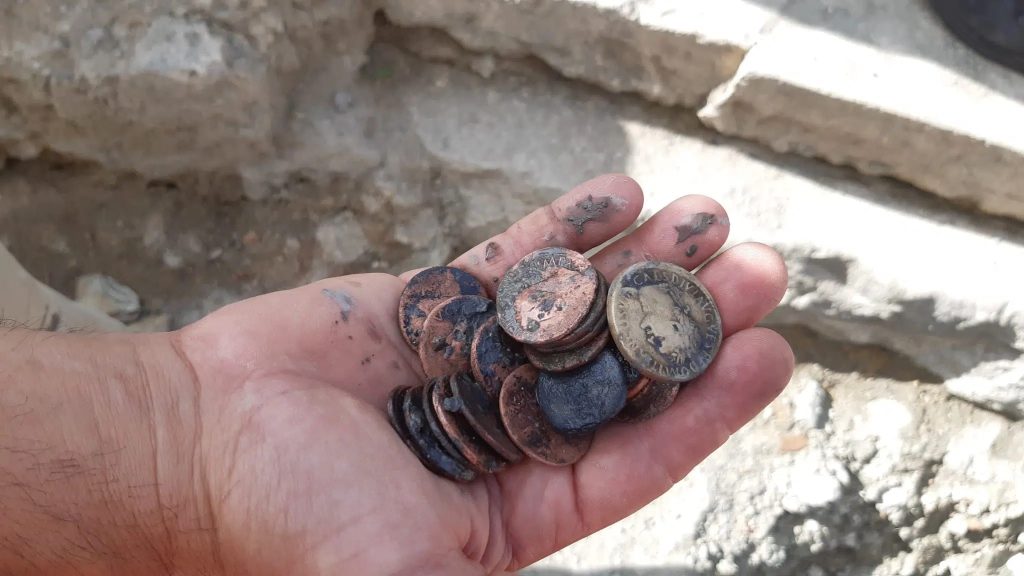
There are two discoveries that have made the last weeks of excavations at Bagno Grande extraordinary. On the one hand, the true size of the sanctuary with numerous holy structures, altars, and pools, on the other hand, the quality and rarity of the objects that appear.
First of all, among the finds, a womb made of bronze stands out (repeated homage to fertility), dated to the period between the end of the Republic and the beginning of the Roman Empire: archaeologists call it a unicum.
And then other bronze offerings that reproduce body parts healed by the gods, such as ears, legs, and penises, and more than 3,000 coins minted specifically for the area. The coins were minted during the reigns of Augustus, the Flavian emperors, Trajan, Hadrian, and Marcus Aurelius.
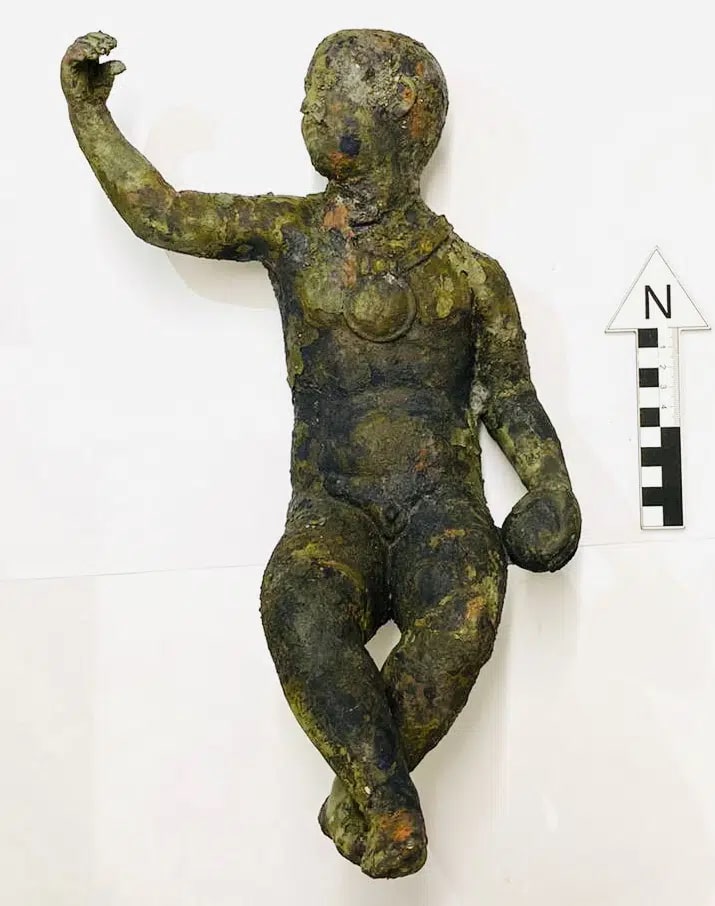
One of the pool’s blocks has the bull engraved onto it. The putto, created by a master craftsman, wears the sacred bulla around his neck and has an antique inscription dedicating the offering engraved on his right leg.
The most surprising discovery of the dig season was discovered on the surface of the holy basin. It has “footprints” etched into the travertine. They included traces of lead and silver, so when they were fresh, they would have shimmered silver-white in the water. The footprints are different sizes — adults, teenagers, and children — and were carved to look like they were left by sandaled feet. There are also bull hooves and human ears with tootsies. This strange religious imagery is possibly associated with Isis and Serapis. It’s also likely that the devout “walked in the footsteps” of the gods in the bathtub to ensure their health.
The sanctuary, which suffered a dramatic collapse in the third century and where the Romans built a new altar on the abyss, can also provide information about the periods after the Roman period.
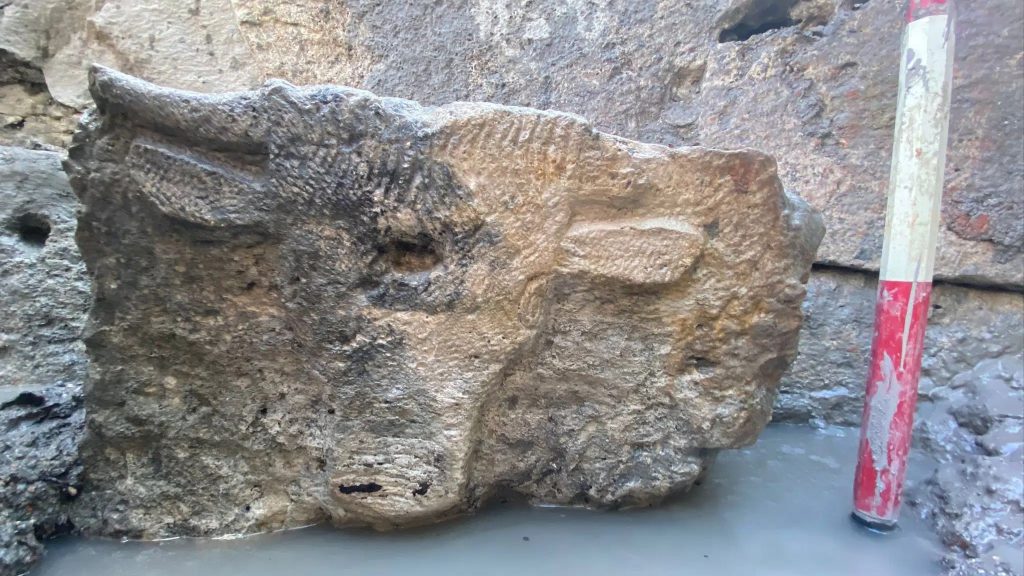
Since the middle of the 16th century, Roman inscriptions honoring the hot springs of Bagno Grande have been documented. In reality, using old marble that was probably mined from this location, the Medici of Florence constructed their baths in the nearby valley (in the 15 th and 16 th centuries).
The uniqueness of the discovery, also highlighted by the Minister of Culture Dario Franceschini, prompted Massimo Osanna, director general of the museums, to announce that funds will soon be allocated to set up a special museum, San Casciano, inside a building in the historic center.
Research work was carried out by the Municipality of San Casciano Dei Bagni and the Archeology, Fine Arts, and Landscape Inspectorate of Siena, Grosseto, and Arezzo.

